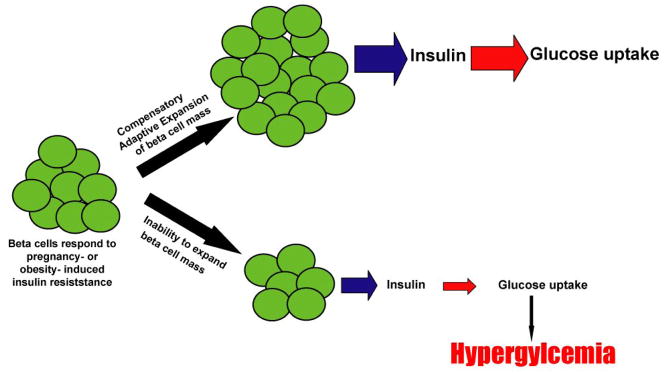Figure 3.
The inability of beta cell mass to adaptively expand in order to compensate for increased insulin demand leads to diabetes. When either pregnancy- or obesity–related insulin resistance creates an increase in metabolic demand for insulin, healthy beta cells are able to expand in number and size to compensate for increased metabolic need for insulin, thereby maintaining glucose homeostasis. When beta cells to expand and adapt to changing metabolic demand, the reduced insulin secretion results in hyperglycemia.

